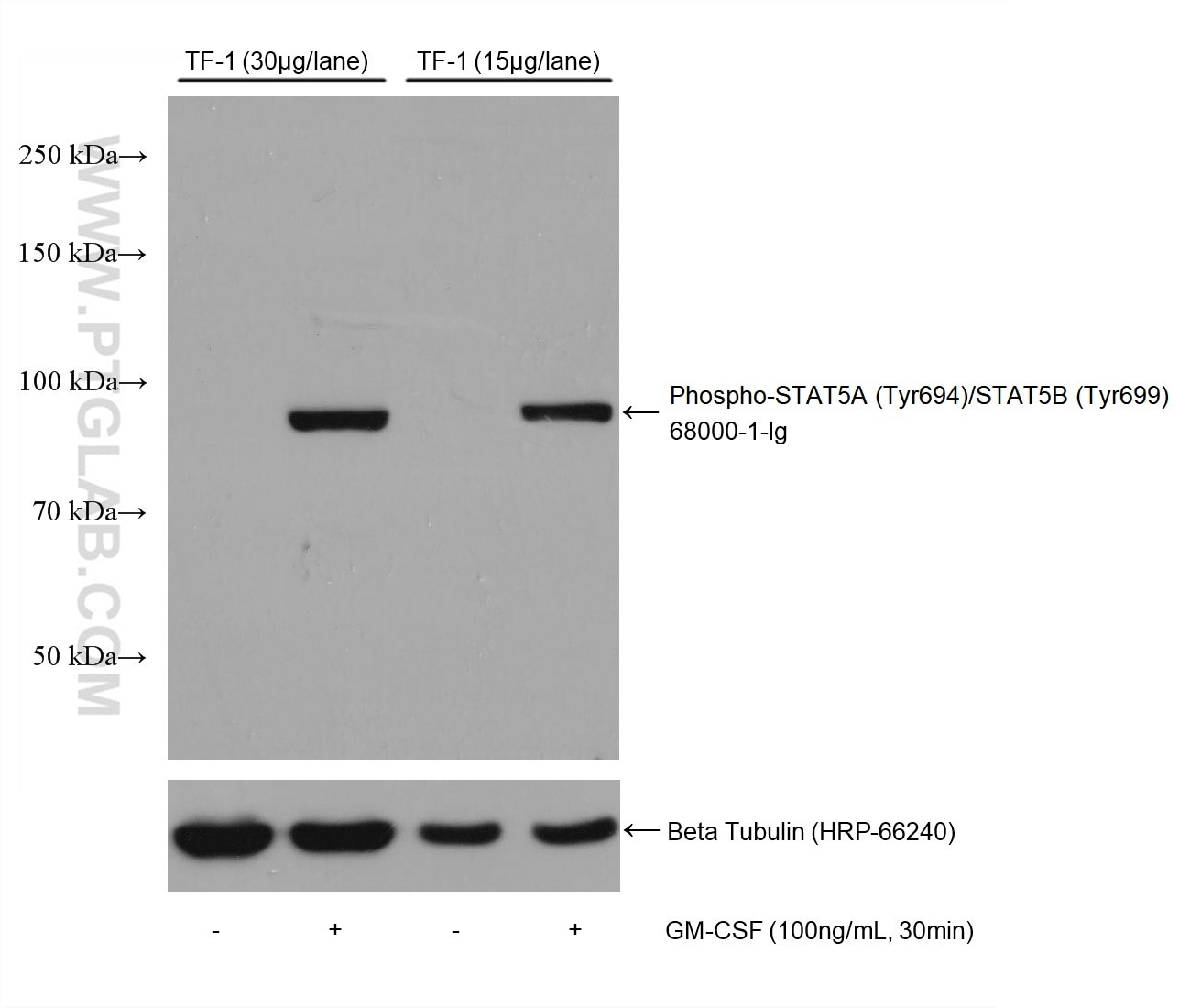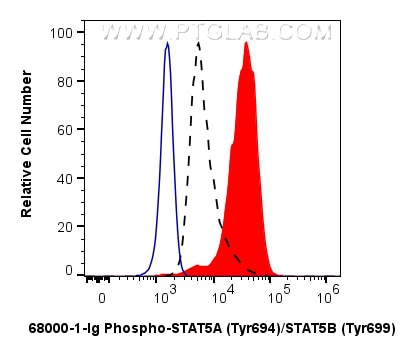Validation Data Gallery
Tested Applications
Recommended dilution
| Application | Dilution |
|---|---|
| It is recommended that this reagent should be titrated in each testing system to obtain optimal results. | |
Product Information
68000-1-PBS targets Phospho-STAT5A (Tyr694)/STAT5B (Tyr699) in WB, FC (Intra), Indirect ELISA applications and shows reactivity with human samples.
| Tested Reactivity | human |
| Host / Isotype | Mouse / IgG2a |
| Class | Monoclonal |
| Type | Antibody |
| Immunogen | Peptide 相同性解析による交差性が予測される生物種 |
| Full Name | signal transducer and activator of transcription 5A |
| Calculated molecular weight | 794 aa, 92 kDa |
| Observed molecular weight | 90 kDa |
| GenBank accession number | BC027036 |
| Gene Symbol | STAT5A |
| Gene ID (NCBI) | 6776 |
| RRID | AB_2918748 |
| Conjugate | Unconjugated |
| Form | Liquid |
| Purification Method | Protein A purification |
| UNIPROT ID | P42229 |
| Storage Buffer | PBS only{{ptg:BufferTemp}}7.3 |
| Storage Conditions | Store at -80°C. |
Background Information
STAT5A, also named as STAT5, belongs to the transcription factor STAT family. In response to cytokines and growth factors, STAT family members are phosphorylated by the receptor associated kinases, and then form homo- or heterodimers that translocate to the cell nucleus where they act as transcription activators. STAT5A is activated by, and mediates the responses of many cell ligands, such as IL2, IL3, IL7 GM-CSF, erythropoietin, thrombopoietin, and different growth hormones. Activation of STAT5A in myeloma and lymphoma associated with a TEL/JAK2 gene fusion is independent of cell stimulus and has been shown to be essential for the tumorigenesis. The mouse counterpart of human STAT5A is found to induce the expression of BCL2L1/BCL-X(L), which suggests the antiapoptotic function of STAT5A in cells. This antibody is a rabbit polyclonal antibody raised against residues near the C terminus of human STAT5A.

